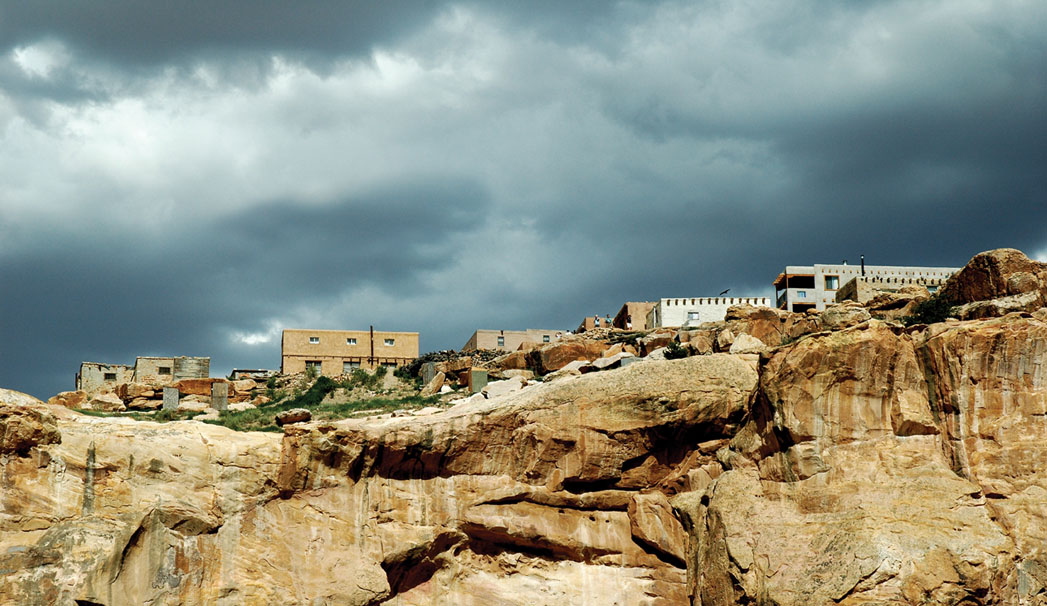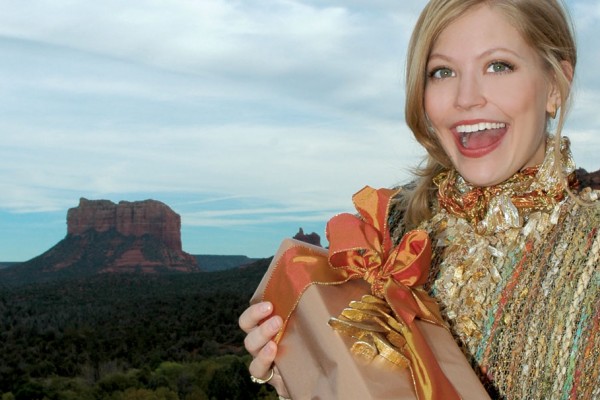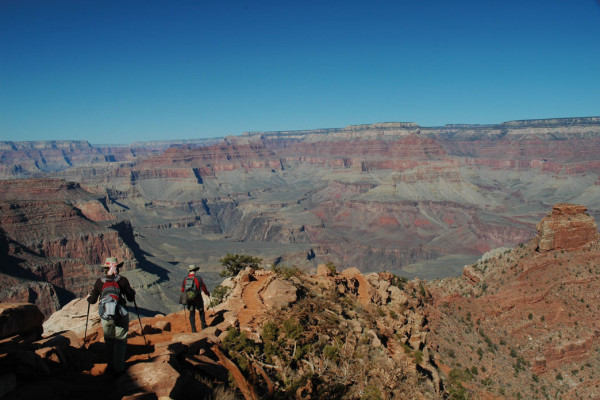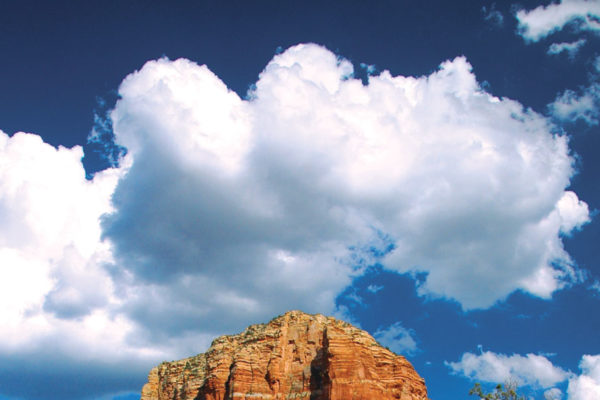About two years ago, on my way home from Santa Fe, N.M., I noticed the signs for the Acoma Pueblo along Interstate 40. Being a fan of Acoma pottery, I pulled off the highway only to arrive 30 minutes after the last tour of the day. From the center, I could see the pueblo perched high on a mesa – so close and yet I was too late. The image has stayed with me ever since. Visiting Acoma this summer was an unforgettable journey, a glimpse into a culture that was well worth the drive from Sedona. Second only to the tour of the pueblo was the chance to spend time with potter Adrian Trujillo and learn about the methods and madness of traditional pottery making. Sedona Monthly began in-depth profiles of Native American artists in 2007 with a look at a family of Navajo silversmiths. Last year, we delved into Hopi katsina carving and this year we continue our profiles with the Acoma potters. Like that of the Navajo and the Hopi, the Acoma’s tradition and talent deserves the utmost reverence.
Acoma Pueblo
The Southwest has no shortage of landscapes that take your breath away, but some locations fill you with serenity, awe and a deep respect for the people who called this area home long before Europeans ever set foot on the continent. One- hundred-and-two miles from the Arizona border in the heart of New Mexico, we found such a place. Follow a winding road through green hillsides for about 12 miles, and suddenly the road descends into an enormous valley where colorful sandstone mesas and monoliths rise from the valley floor like exotic animals or the hands of eager schoolchildren. Acoma Pueblo sits atop the largest mesa, 367 feet above the cedar and cottonwood trees below. As you continue down the road, passing rock promontories and approaching the Sky City Cultural Center, you get a better view of the homes above you – some have kept careful watch over the surrounding land since A.D. 1150, while others are just being built. But this view isn’t enough. The gentle breeze, isolation, huge sky, smell of wet earth after a summer storm and sound of birds all awaken your sense of exploration. You have to get on top of that mesa.
There’s only one way to explore Acoma Pueblo, and that’s by purchasing a ticket at the cultural center. If you want to photograph the pueblo or any of the Acoma landscape, you also need to purchase a photography permit, and we highly recommend you do so. (Etiquette dictates you still need to ask permission before photographing tribal members or their artwork, and photography of the interior of the San Esteban del Rey Mission or the cemetery grounds is prohibited.) Tours last about 75 minutes. When your scheduled tour time arrives, you’ll be shuttled to the top of the mesa where a guide will lead you on a walking tour (about three-quarters of a mile) of the entire pueblo. The tour begins at the southeast side of the mesa at the towering San Esteban del Rey Mission, which was under construction from 1629 until 1640 under the direction of Fray Juan Ramirez of Spain. Be warned: The stories surrounding the construction of the mission are hard to accept. One story that we’ll never forget involves Acoma families being forced to trade eight of their children for the cast-iron bells atop the church. Inside the mission it’s cool and dark. You’ll find short wooden pews, a dirt floor, a defunct confessional, murals featuring rainbows and corn, and a wood-beamed ceiling where noisy birds nest. The Catholic artwork hanging high above the pews date back to 1841, and the crucifix at the altar was brought in from Mexico in the 18th century. Present-day religious beliefs incorporate Catholicism with the Acoma’s traditional earth-based religion.
Walk outside the mission and past the cemetery walls, and take a deep breath. The atrocities committed against the Acoma in the name of Christianity make the cloud-laden sky seem even heavier. The mood begins to lighten as the route leads you past adobe homes, sleeping dogs and kivas, which are sacred spaces usually open only to men. Sturdy white ladders lead to entrances in the kiva roofs. About 13 families live at the pueblo year-round with more than 4,000 tribal members living on the 431,664-acre Acoma reservation. The tribe is matrilineal, so all homes and property belong to the women. Homes are passed down from mothers to their youngest daughter (or the youngest son if the woman has no daughters) – houses are not sold and continuously remain within families, thus all Acoma have a family home on top of the mesa. Acoma men govern the reservation.




